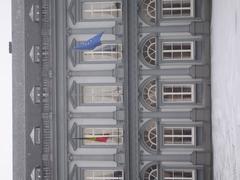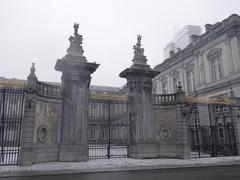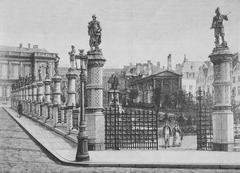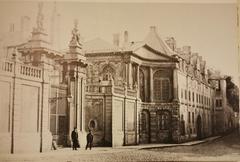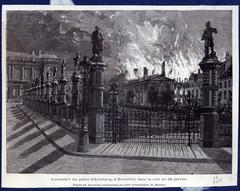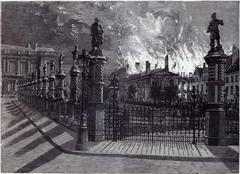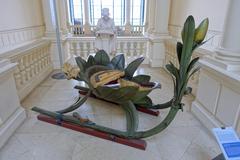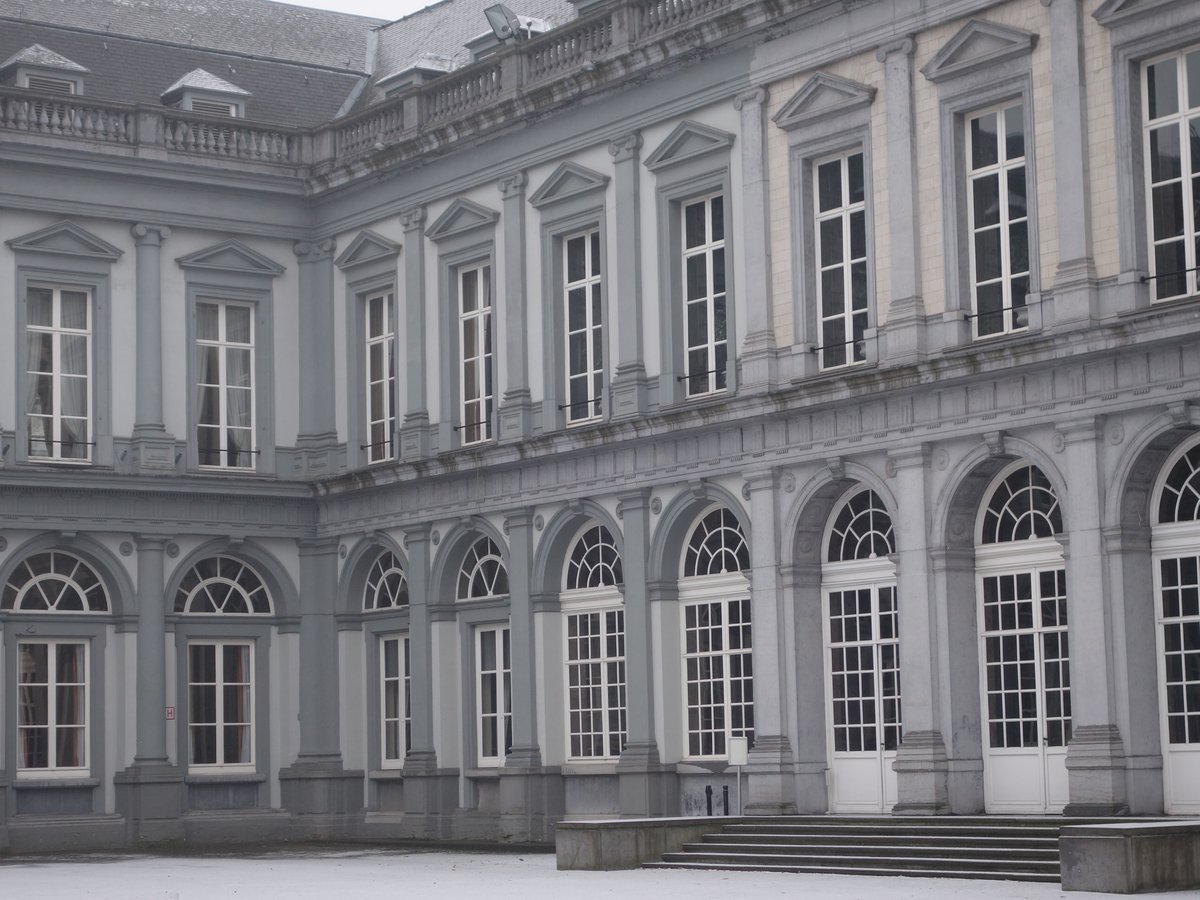
Egmont Palace Brussels: Visiting Hours, Tickets, and Historical Site Guide
Date: 14/06/2025
Introduction
Located in the heart of Brussels, Egmont Palace (Palais d’Egmont or Egmontpaleis) is a distinguished landmark that fuses centuries of Belgian aristocratic heritage with a pivotal role in modern diplomacy. Built in the 16th century for the influential Egmont family, the palace has evolved architecturally and functionally, serving both as an aristocratic residence and, today, as the official reception venue for the Belgian Ministry of Foreign Affairs.
While public access to the interiors is limited due to ongoing governmental use, Egmont Palace occasionally opens for guided tours, cultural exhibitions, and special events—primarily during Belgium’s National Day celebrations in the summer. Its richly decorated salons, neoclassical façades, and serene English landscape gardens provide a rare glimpse into Brussels’ layered history and contemporary political significance. The palace’s proximity to notable attractions, such as Petit Sablon Square and Parc de Bruxelles, makes it a cornerstone of any cultural exploration in the city (Visit Brussels) (Belgian Ministry of Foreign Affairs) (Egmont Institute).
Table of Contents
- Introduction
- History and Architecture
- Notable Historical Events
- Visiting Egmont Palace: Hours, Tickets, and Tours
- Cultural and Political Significance
- Egmont Palace in Brussels and Europe
- Getting There
- Nearby Attractions
- Exterior and Interior Highlights
- Gardens and Outdoor Artistry
- Modern Functions
- Events and Special Openings
- Frequently Asked Questions (FAQ)
- Conclusion
- References
History and Architectural Evolution
Origins and Early History
Egmont Palace’s construction began between 1548 and 1560, commissioned by Françoise of Luxembourg, widow of Lamoral, Count of Egmont. The palace initially exemplified Renaissance style and symbolized the Egmont family’s prominence in Flemish and Belgian history. Lamoral’s execution in 1568, a major event in the fight for Flemish rights, remains a defining moment associated with the site.
Architectural Evolution
Over the centuries, the palace transitioned from its Renaissance origins to embrace neoclassical refinements, particularly under the Arenberg family in the 18th century. The main façade, with its symmetry and restrained grandeur, reflects French neoclassical style, while elements of Flemish Renaissance architecture remain visible in the rear courtyard. Extensive renovations followed fires in 1892, 1927, and 1959, culminating in a blend of historical authenticity and modern function after the Belgian State acquired the property in 1964 (Wikipedia) (Focus on Belgium) (CCE Egmont).
Notable Historical Events
Egmont Palace has played host to pivotal moments in Belgian and European history, including serving as German military headquarters in 1918 and as the negotiation site for the 1976 Egmont Pact on linguistic reforms. Today, it is a key venue for diplomatic receptions and international summits, underlining its ongoing relevance in European affairs.
Visiting Egmont Palace: Hours, Tickets, and Tours
Visiting Hours
Public access to Egmont Palace is restricted due to its diplomatic functions. The palace opens to visitors during select events—most notably during the summer open days around Belgium’s National Day (July 21) and some cultural exhibitions. During these periods, visiting hours are typically from 10:00 AM to 5:00 PM, Tuesday through Sunday (Visit Brussels).
Tickets and Accessibility
Entry during open days is often free, but capacity is limited and queues are common. For special events or guided tours, tickets may be required and should be reserved in advance. The palace and Egmont Park are generally accessible to visitors with reduced mobility, although some historical areas may present challenges (Trip.com).
Guided Tours and Visitor Tips
Guided tours, offered during public openings, provide in-depth insights into the palace’s history, architecture, and diplomatic legacy. Photography is usually allowed in the gardens and designated interior spaces. Visitors are encouraged to check official resources for the latest tour offerings and visitor guidelines.
Cultural and Political Significance
Egmont Palace is more than an architectural treasure—it is a living symbol of Belgium’s national identity and Brussels’ cosmopolitan role. Its halls have hosted everything from treaty signings to cultural exhibitions, reflecting its dual function as a center of heritage and a hub of international dialogue. The palace is also home to the Egmont Institute, a prominent think tank that hosts high-level conferences and policy discussions on international affairs (Egmont Institute).
Egmont Palace in Brussels and Europe
With Brussels as the de facto capital of the European Union, Egmont Palace is integral to the city’s status as a center for diplomacy. The palace regularly hosts EU-related events, international summits, and cultural exhibitions, reinforcing Belgium’s role as a key mediator and facilitator in European and global affairs (Belgian Foreign Affairs).
Getting There
Egmont Palace is located on Rue aux Laines, south of Brussels’ historic center.
- Metro: Trône/Troon and Louise/Louiza stations (Lines 2 and 6) are within walking distance.
- Bus: Several lines, including 38 and 95, serve the area.
- Car: Parking is limited; public transport is recommended.
Nearby Attractions
Enhance your visit by exploring:
- Petit Sablon Square: Ornate statues and manicured gardens.
- Royal Palace of Brussels: The official residence of the Belgian monarchy.
- Parc de Bruxelles: A large public park ideal for relaxation.
- Mont des Arts and Place du Petit Sablon: Historic and artistic hotspots (The Portable Wife).
Exterior and Interior Highlights
Exterior Features
The palace’s neoclassical façade features elegant pilasters, columns, and large sash windows. The English landscape gardens surrounding the palace are adorned with historical monuments and mature trees (Evendo).
Interior Highlights
- Marble Gallery: Polished marble, gilded moldings, and classical statuary (Magazine Belles Demeures).
- Tapestry Room: Flemish tapestries with historical and mythological themes.
- Mirror Gallery: Large mirrors create a sense of spaciousness (TripHobo).
- Ambassadors’ Staircase: Sweeping marble steps and a grand balustrade.
Rich period furnishings, portraits of the Egmont and Arenberg families, and a blend of Renaissance, Baroque, and neoclassical motifs characterize the interiors.
Gardens and Outdoor Artistry
Egmont Park, adjacent to the palace, is a tranquil English landscape garden featuring winding paths, ponds, sculptures, and commemorative plaques (Evendo). The park is open year-round and is an inviting space for relaxation and photography.
Modern Functions
Egmont Palace is equipped with modern conference rooms and facilities, hosting events for up to 450 participants. It is also home to the Protocol Division of Belgian Foreign Affairs and regularly accommodates international delegations and policy gatherings (Magazine Belles Demeures) (CCE Egmont).
Events and Special Openings
Annual summer exhibitions and cultural events, such as “Fashion @ Egmont Palace” and “Art & Diplomacy,” attract thousands of visitors and showcase Belgium’s rich artistic and diplomatic heritage (Belgian Foreign Affairs). Guided tours are sometimes available during these periods, offering a rare opportunity to experience the palace’s interiors.
Frequently Asked Questions (FAQ)
Q: When can I visit Egmont Palace?
A: The palace is open to the public only during select open days and cultural events, typically in summer. Check official listings for dates.
Q: Are tickets required?
A: Entry is usually free during summer open days; tickets may be needed for special events or tours. Advance reservations are advised.
Q: Is the palace accessible?
A: Most public areas and the gardens are accessible, though some historic sections may pose challenges for wheelchair users.
Q: Can I take photos inside?
A: Photography is allowed in the gardens and, depending on the event, in select interior spaces. Check signage and staff instructions.
Q: What nearby attractions can I visit?
A: Petit Sablon Square, Royal Palace of Brussels, Parc de Bruxelles, and Mont des Arts are all within walking distance.
Conclusion
Egmont Palace is a remarkable destination where history, art, and diplomacy intersect in the heart of Brussels. While its interiors are accessible only during special occasions, the palace’s stunning exterior and adjacent park provide year-round appeal. Whether you are drawn by architectural grandeur, cultural significance, or the tranquility of Egmont Park, this landmark is an essential part of Brussels’ historical journey.
For up-to-date information on visiting hours, tickets, and events, consult the City of Brussels official website or Visit Brussels. Enhance your exploration with the Audiala app for guided tours and travel tips, and discover more of Brussels’ rich heritage.
References and Further Reading
- Egmont Palace Brussels: Visiting Hours, Tickets, and Historical Insights (2025)
- Egmont Palace - Wikipedia
- Egmont Palace: Historical Site and Scene of Important Diplomatic Meetings - Focus on Belgium
- Short History of Egmont Palace - CCE Egmont
- Egmont Palace - Evendo
- Brussels Parks and Forests - Visit Brussels
- Egmont Palace - Egmont Institute
- Belgian Foreign Affairs - Diplomats and Officials Abroad
- A Day in Brussels Itinerary - The Portable Wife
- Egmont Palace Visiting Guide - Trip.com
- Brussels Grand Place - Brussels.be

